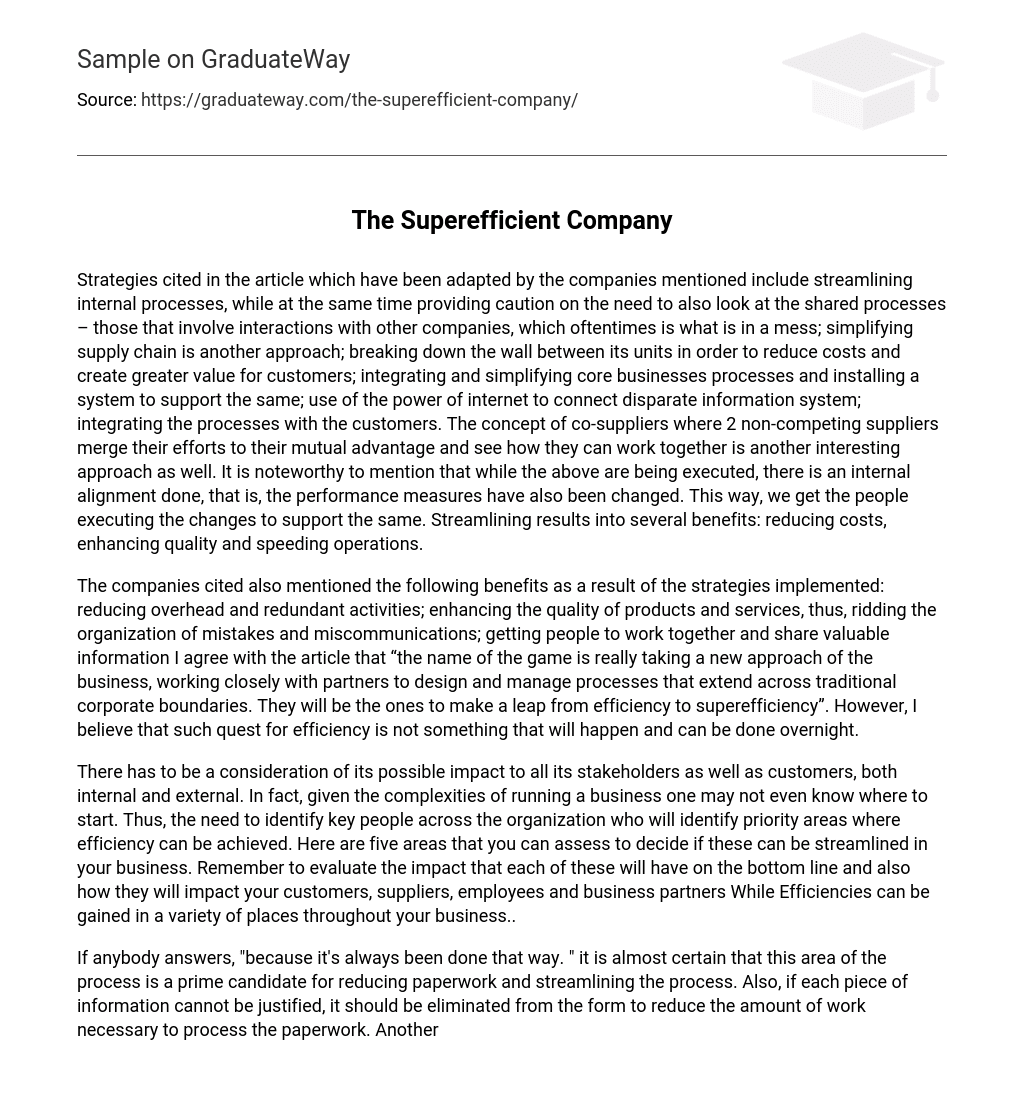Strategies cited in the article which have been adapted by the companies mentioned include streamlining internal processes, while at the same time providing caution on the need to also look at the shared processes – those that involve interactions with other companies, which oftentimes is what is in a mess; simplifying supply chain is another approach; breaking down the wall between its units in order to reduce costs and create greater value for customers; integrating and simplifying core businesses processes and installing a system to support the same; use of the power of internet to connect disparate information system; integrating the processes with the customers. The concept of co-suppliers where 2 non-competing suppliers merge their efforts to their mutual advantage and see how they can work together is another interesting approach as well. It is noteworthy to mention that while the above are being executed, there is an internal alignment done, that is, the performance measures have also been changed. This way, we get the people executing the changes to support the same. Streamlining results into several benefits: reducing costs, enhancing quality and speeding operations.
The companies cited also mentioned the following benefits as a result of the strategies implemented: reducing overhead and redundant activities; enhancing the quality of products and services, thus, ridding the organization of mistakes and miscommunications; getting people to work together and share valuable information I agree with the article that “the name of the game is really taking a new approach of the business, working closely with partners to design and manage processes that extend across traditional corporate boundaries. They will be the ones to make a leap from efficiency to superefficiency”. However, I believe that such quest for efficiency is not something that will happen and can be done overnight.
There has to be a consideration of its possible impact to all its stakeholders as well as customers, both internal and external. In fact, given the complexities of running a business one may not even know where to start. Thus, the need to identify key people across the organization who will identify priority areas where efficiency can be achieved. Here are five areas that you can assess to decide if these can be streamlined in your business. Remember to evaluate the impact that each of these will have on the bottom line and also how they will impact your customers, suppliers, employees and business partners While Efficiencies can be gained in a variety of places throughout your business..
If anybody answers, “because it’s always been done that way. ” it is almost certain that this area of the process is a prime candidate for reducing paperwork and streamlining the process. Also, if each piece of information cannot be justified, it should be eliminated from the form to reduce the amount of work necessary to process the paperwork. Another area to investigate is filing and storage. File cabinets and storage boxes take up valuable office space. Use a document management system to archive paperwork for long term storage and retrieval to free-up the office space that is being occupied by paper storage Employees on the frontline and in the trenches know their jobs better than anyone else.
The best employees have been with the company a long time and know the processes and decisions inside out. Look for areas where supervisors and managers are involved in day-to-day operations of the business and these will be the most common areas that can benefit from empowering employees. Remember, every time you take a decision/interaction out of the work-flow, you improve its efficiency. No business is too large or too small to reap the benefits of outsourcing. Restaurants can benefit as well as small businesses. There are many reasons to outsource any variety of functions. If you want to successfully implement outsourcing, planning and preparation are key.





